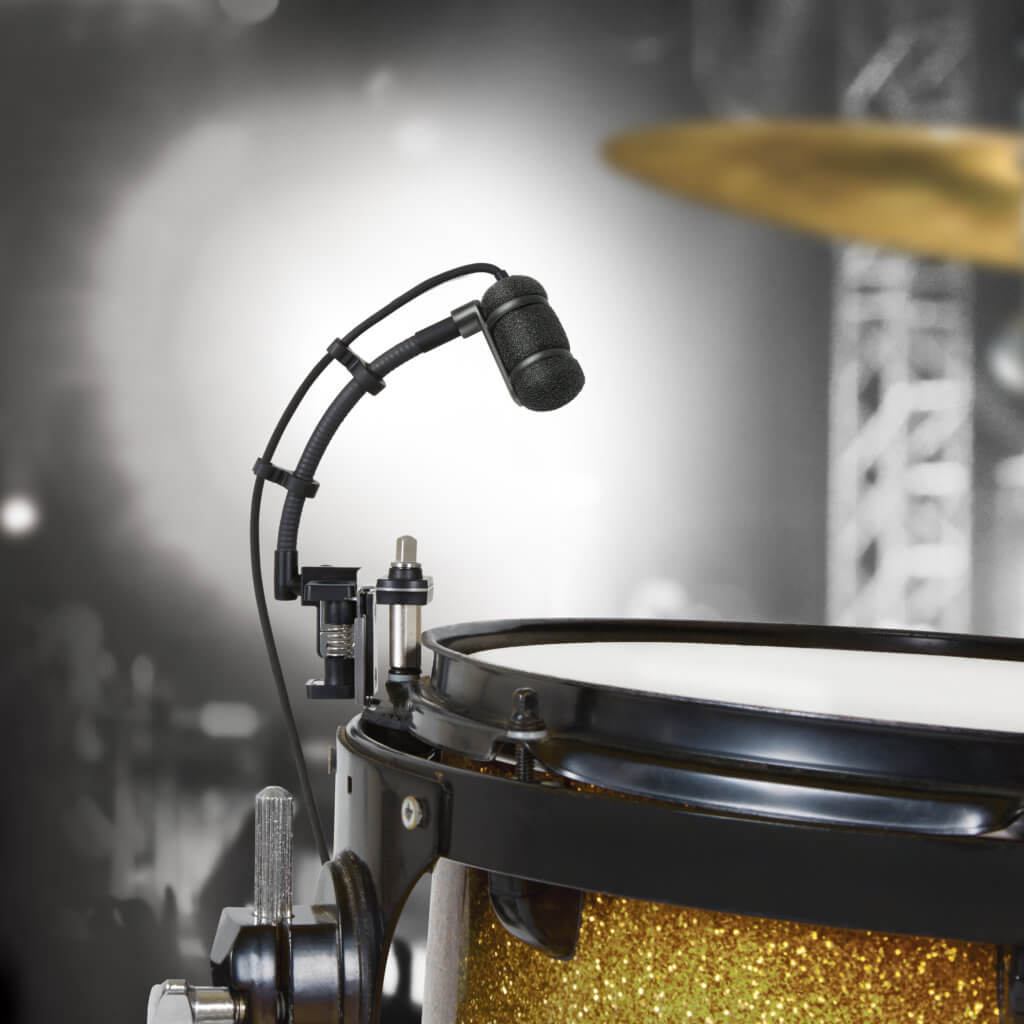Performer Magazine and Audio-Technica team up for a primer on the best drum mics for your home recording studio.
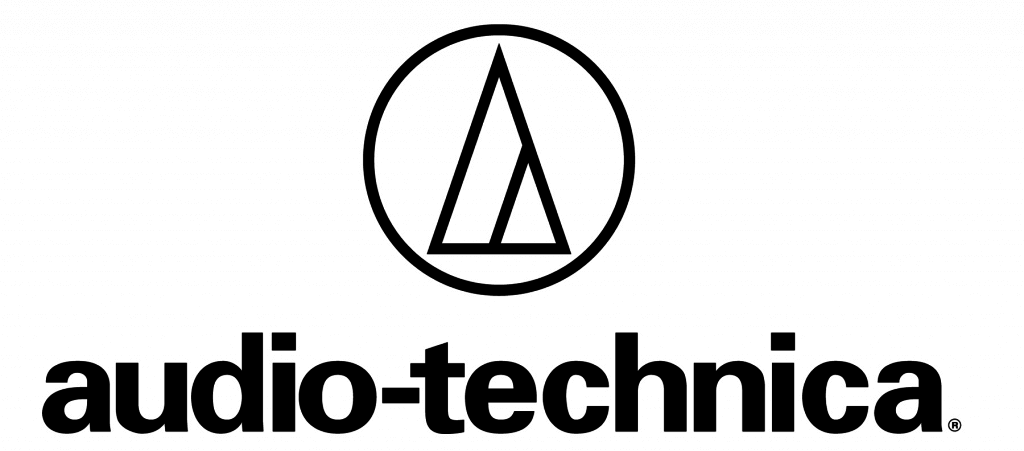
Welcome to the first in a four-part series that will provide real-world advice for setting up your home recording studio to record a full drum kit, co-presented by Performer Magazine and Audio-Technica. In this installment, we’ll take a closer look at the best microphones for recording drums in your home studio, what kinds of specific microphones are ideal on each part of the drum kit, plus some basic tips for recording the cleanest drum tracks possible. In upcoming installments, we’ll go into more detail about specific drum miking techniques for snare, kick, cymbals, hi-hats, overheads and even adding effects like reverb, delay, room ambience and gating to your mix.
DON’T MISS PART TWO: How to Record Drums: Snare and Kick Drums
and PART THREE: How to Record Drums: Miking Overhead Drums and Cymbals
RECORDING DRUMS IN YOUR HOME STUDIO
Recording studios have come a long way since the days of multi-million dollar complexes with 30-foot long consoles and flying faders. It’s now possible to record professional-quality albums at home, with gear that costs a fraction of what those old commercial studios paid. With that in mind, many home studio users shudder at the thought of recording drums.
With guitars, you’re typically placing an instrument mic on the amp’s speaker or one of the speakers in the guitarist’s cabinet, positioning it where it sounds best for your application, and you’re on your way. Vocals are fairly simple, as well. Place the singer in front of your mic of choice, and that’s half the battle. Granted, that’s an oversimplified explanation, but not when you compare it to the daunting task of recording drums.
Drums…well, there’s just a lot more of them. And that makes things tricky. Sounds pressure levels are an issue; drums are loud and full of attack. Bleed is an issue; again, drums are LOUD and full of attack (notice a pattern here?) And oftentimes, it can be intimidating to know just what the best mics are for a full drum set, how many mics you’ll need to capture the performance in the best way for your mix, and how to position the mics on each individual drum in the best manner possible to get the sounds you’re after.
In short, no matter what room you’re in (home studio, commercial space, even on stage), you’ll want to mic each part of the kit individually so that you can capture their unique tonal characteristics, and so that you can balance out the entire drum set in the mix by adjusting certain parts, if need be.
THE BEST MIC FOR KICK DRUMS
Kick drums can be difficult to get right in the studio, but generally speaking, you’re going to want to place one mic inside, for two specific reasons. One, it helps capture the natural attack of the kick drum, and it also helps isolate and mitigate bleed from other parts of the kit. You’ll also likely want to place a close mic outside, in front of the head.
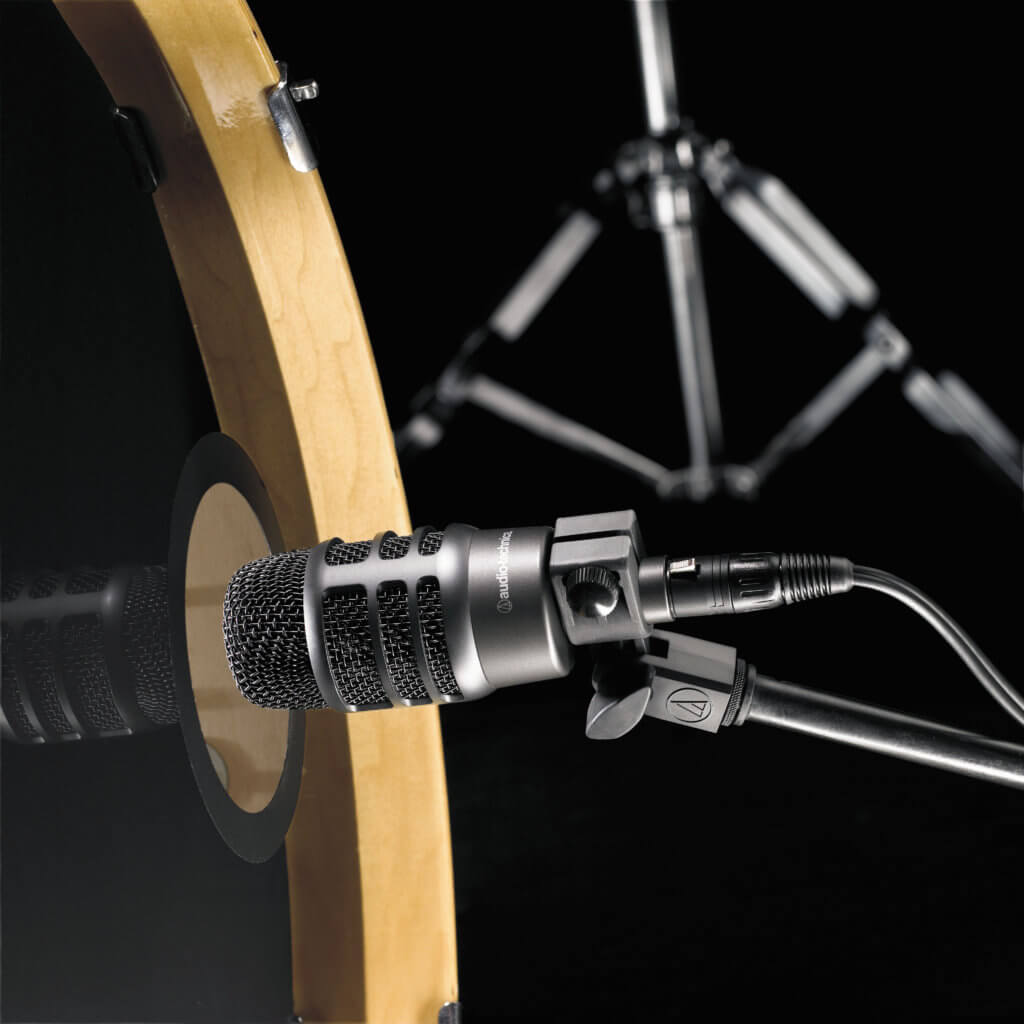
Inside, we recommend a large dynamic mic like the Audio-Technica ATM250, which will help nail the “punch” that you’ll typically want from the kick drum. Outside the head, a large-diaphragm cardioid condenser can help enhance the bottom-end of the spectrum to round out the “attack” being picked up by the dynamic mic inside. Think of them as complementary buddies designed to work in tandem to get the best kick sound possible. A great choice for this application would be the AT4047/SV.
THE BEST MIC FOR HI-HATS
Hi-hats occupy a unique sonic space in your drum mix, at times splashy, percussive and (sometimes) top-heavy in the frequency range. For hi-hats, we feel the best mic is a side-address designed cardioid condenser instrument mic, like the ATM450. The side-address design makes placement on the source easy, and the high-pass filter and pad can be engaged to ease some of the bleed coming through from, say a snare or the kick drum (this is true even for non leadfooted drummers).
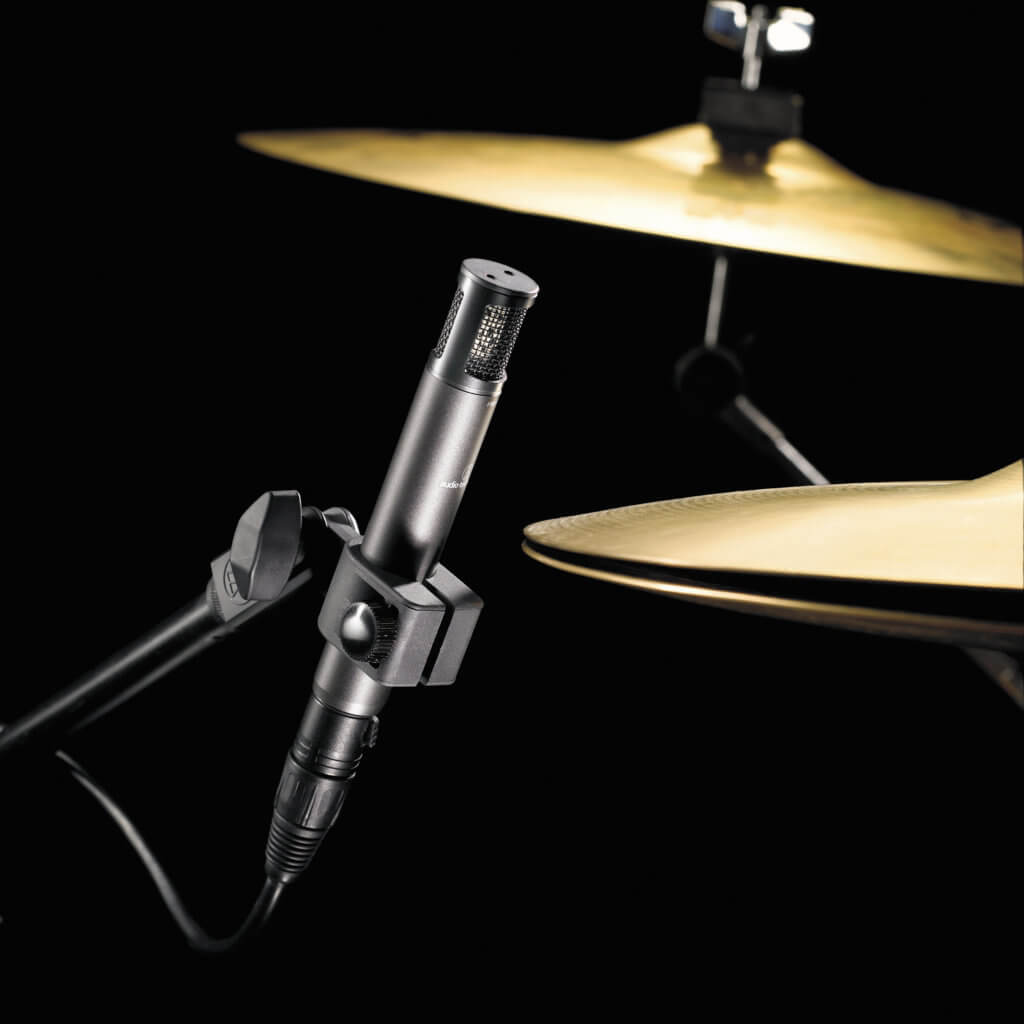
THE BEST MIC FOR SNARE DRUMS
Snare is oftentimes all about attack, and capturing that accurately without bleed can be challenging. One of the ways to get the best snare sound is to use two mics, one set up above and one below the head. For the top, the best mic for the job is a hypercardioid dynamic instrument mic, like the ATM650 which is designed for capturing loud attacks at close distances, without clipping or distortion. If you’re also bottom-miking, you can choose to use another dynamic instrument mic, or a condenser with high SPL. You could, in fact, place another ATM450 like the one you used on hi-hats, under the snare, with the high-pass filter and pad engaged in this situation, as well. Again, this’ll help combat any bleed from other parts of the kit.
PRO TIP: make sure the bottom mic is flipped out of phase at the preamp stage so that you’re not canceling out waves and ending up with an unnaturally “thin” snare attack in the mix.

THE BEST MIC FOR TOMS
If you use the wrong mic on toms, they have a tendency to be boomy and muddy up an otherwise “tight” and “percussive” drum sound. We’ll get into placement and technique in future installments, but using good overheads arranged properly will yield nice results, especially when mixed with closer-miked toms near the rack. For overheads, we’d recommend going with the ATM450 again, or a similar pair of instrument condenser mics designed for high sound pressure level applications.
For closer miking, the best options would be something like the ATM230. Why? Because its capsule is designed for high SPL scenarios (like, you guessed it, drums) and because the hypercardioid design rounds out the low-end while also focusing right on the sound source (we’re gonna sound like a broken record, but this aids in keeping bleed-through down to a minimum). Another well-balanced mic that would be great for toms, especially, is the ATM350a, which handily enough comes in a kit with a nice gooseneck mounting system perfect for drums (the ATM350D package).
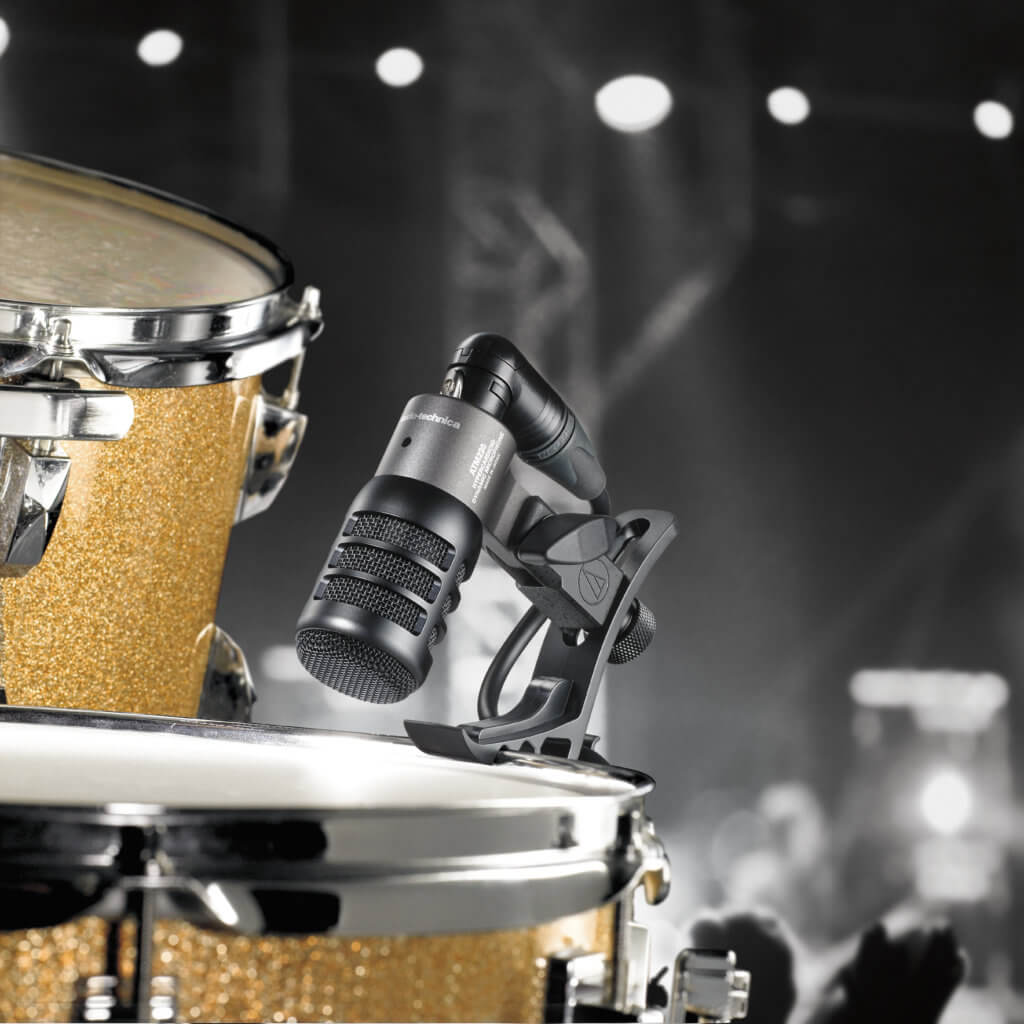
THE BEST MICS FOR CYMBALS
Splashy and sibilant, cymbals also present a challenge during the mix if you’ve used the wrong mic during your tracking session. A well-position condenser mic will handle high SPL situations like a ride, but you may also want to capture cymbals with your overhead setup. The trusty, and versatile ATM450s can assist here, as they’re simply great for overhead applications. Just remember that closer positioning to your cymbals will capture less of the overall kit, while a more elevated position can round out the entire drum set for a balanced “overview” of the kit. You might find that handy depending on the style of music. For tight, syncopated prog and metal, you might not need it. For soul, R&B and more retro sounding material, try moving the mics further from the source and see how that suits the session.
THE BEST ROOM MICS FOR DRUMS
We haven’t talked much about the room yet; we’ll get to that in later installments. But no matter if you’re in a spacious, cavernous hall or a tight, cramped bedroom space, capturing the “room” can add an interesting element to your overall drum mix or some much-needed ambience that might otherwise be missing from close-miking your drums individually, out-of-context with how they sound as a cohesive unit. Since this is a much larger topic, stay tuned for our next installment for much more detail on room miking techniques and the best mics for the job.
CLOSING THOUGHTS
Now, keep in mind this is simply a primer to get you thinking about the best drum mics for your studio; these are just some recommendations for the basics you’ll need to get started. For a more serious setup, you can add additional mics to capture your drums from different angles, use different types of mics to capture more unique percussive tones coming from the kit than what you’d typically aim for, or even try something totally off-the-wall when it comes to miking a full drum kit.
We hope this installment at least gets you familiar with the quantity and best types of mics if you do choose to venture into the world of recording drums in your own studio. Stay tuned for upcoming parts of the series that will focus further on practical microphone setup and recording techniques for each piece of the kit.
